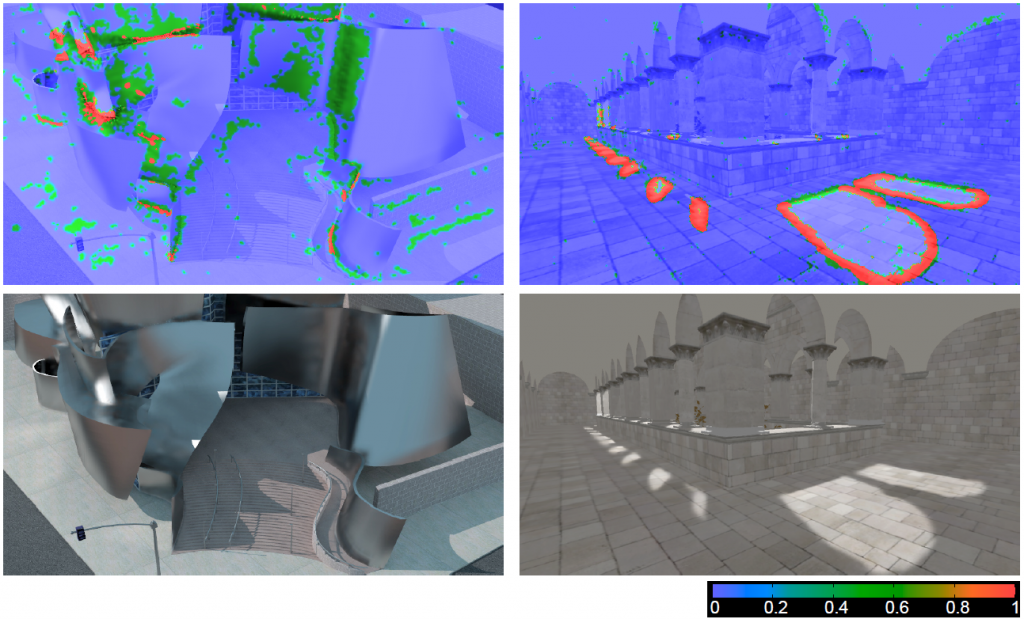Abstract

Synthetically generating images and video frames of complex 3D scenes using some photo-realistic rendering software is often prone to artifacts and requires expert knowledge to tune the parameters. The manual work required for detecting and preventing artifacts can be automated through objective quality evaluation of synthetic images. Most practical objective quality assessment methods of natural images rely on a ground-truth reference, which is often not available in rendering applications. While general purpose no-reference image quality assessment is a difficult problem, we show in a subjective study that the performance of a dedicated no-reference metric as presented in this paper can match the state-of-the-art metrics that do require a reference. This level of predictive power is achieved exploiting information about the underlying synthetic scene (e.g., 3D surfaces, textures) instead of merely considering color, and training our learning framework with typical rendering artifacts. We show that our method successfully detects various non-trivial types of artifacts such as noise and clamping bias due to insufficient virtual point light sources, and shadow map discretization artifacts. We also briefly discuss an inpainting method for automatic correction of detected artifacts.
Copyright Notice
The documents contained in these directories are included by the contributing authors as a means to ensure timely dissemination of scholarly and technical work on a non-commercial basis. Copyright and all rights therein are maintained by the authors or by other copyright holders, notwithstanding that they have offered their works here electronically. It is understood that all persons copying this information will adhere to the terms and constraints invoked by each author’s copyright. These works may not be reposted without the explicit permission of the copyright holder.